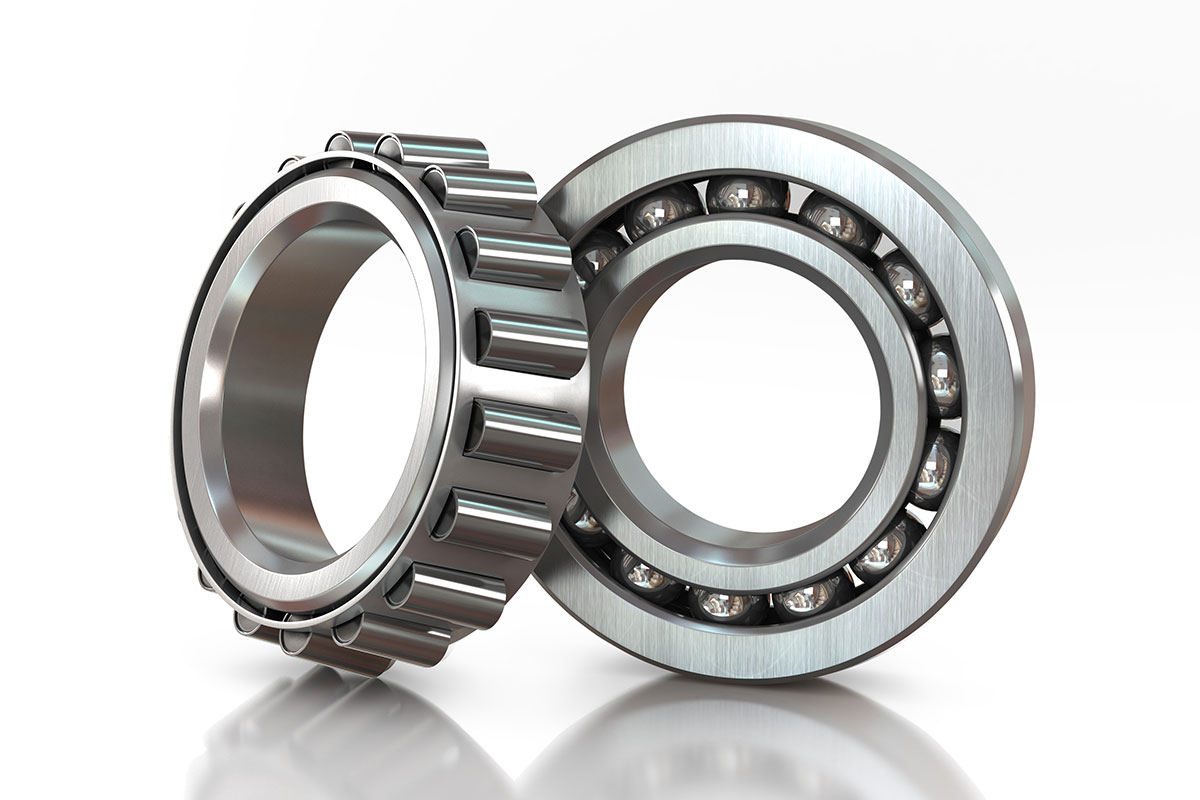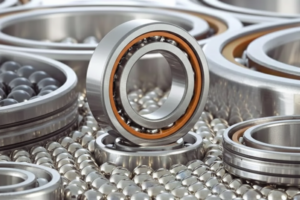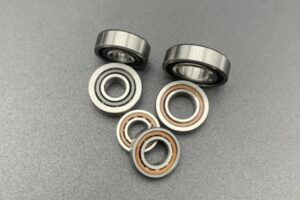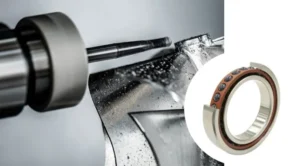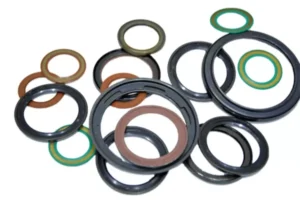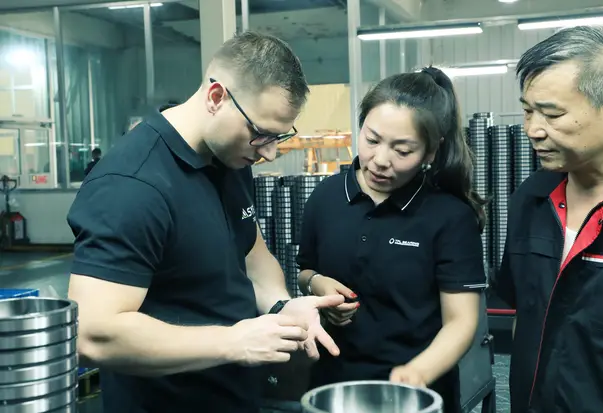Introduction: What Makes Bearings Different?
If you’re trying to figure out what kind of bearing you need, you’re in the right place. Bearings help machines move smoothly, and there are a few types out there. You’ve probably heard of ball bearings, but there are also roller bearings, needle bearings, and bushings.
So how do you know which one is right for your job? Let’s break it down together in a simple way, so you can quickly find what works best for your machine.

Ball Bearings vs. Roller Bearings
Let’s talk about two common types: ball bearings and roller bearings. They both help things turn, but they do it a little differently.
How Ball Bearings Work
Ball bearings have tiny metal balls inside that roll around to stop parts from rubbing too much. They’re awesome for lighter things, like a skateboard or a fan, because they let stuff spin really fast and smooth.

How Roller Bearings Work
Roller bearings don’t use balls—they have cylinder shapes instead. These rollers can carry heavier things, like in big machines at a factory, but they might not spin as fast as ball bearings.

Ball vs Roller Bearing Capacity
So, how much can they handle? This is a big difference! Because roller bearings use cylinders or cones that touch more of the surface, they can usually hold up a lot more weight.
Think of it like lying on a bed of logs versus a bed of balls – the logs spread your weight out more! So, roller bearings are often used for heavier jobs. Ball bearings are great for lighter weights and when things need to spin really fast.
When to Pick Ball Bearings or Roller Bearings
You’ll find ball bearings in lots of everyday things like small electric motors, your skateboard wheels, or even inside toys that spin. They are good when speed and smoothness are key for lighter stuff.
Roller bearings show up in heavier-duty places, like the wheels of cars and trucks, or in big machines used in factories. They are chosen when you need to handle a lot of weight.
Needle Roller Bearing vs Ball Bearing
There’s a special kind of roller bearing called a needle roller bearing. Let’s see how it stacks up against a ball bearing.
What Are Needle Roller Bearings?
Needle bearings are a type of roller bearing, but they have long, skinny rollers that look like needles. They’re perfect for tight spaces because they don’t take up much room, and they can still handle heavy loads.

Needle vs Ball Bearing: Size and Strength
Needle bearings are super helpful when you don’t have much space because their “needle” shape lets them fit into tight spots. Even though they are thin, because they are long, they can still handle a good amount of weight compared to their size. They are often used where a regular roller bearing is too big, but you still need more strength than a ball bearing can give you in that small space.
Ball Bearings vs. Bushings
Now let’s compare ball bearings to something called a bushing (sometimes called a bush bearing).
What Is a Bushing?
Bushings are like simple sleeves or tubes. They don’t have any rolling parts like balls or rollers. One part of your machine just rubs or slides against the inside of the bushing. This means they have more rubbing than ball bearings.

Bushing vs Ball Bearing: Which is Right?
Because bushings have more rubbing, they aren’t usually the best choice for things that spin really fast all the time. They work well for movements that are slow, or that just go back and forth a little. They can also be good in places where it might get dirty, as they are simpler and tougher in some ways.
Ball bearings are much better when you need things to spin easily and quickly with hardly any rubbing, which saves energy and keeps things cooler.
Where Ball Bearings Shine
So, where are ball bearings really the top choice?
Best Uses for Ball Bearings
Ball bearings are fantastic for jobs where you need things to spin fast and super smoothly with very little rubbing. They are great for carrying loads that push down (radial loads) and some loads that push sideways (axial loads). They help machines run quietly and efficiently.
Why Choose Ball Bearing Bearings for Certain Jobs
If your project involves motors, fans, or anything that spins freely at speed without huge weights, ball bearings are often the go-to choice. They offer that nice, easy spin you’re looking for.
Conclusion
So, we’ve seen that while all bearings help things move, they do it in different ways! Ball bearings are great for speed and smoothness with lighter loads, roller bearings handle more weight, needle bearings fit in small spaces while still being strong, and bushings are simple sleeves good for slower or back-and-forth movement.
Picking the right bearing is like choosing the right tool for a job – it makes everything work better and last longer.
Need help finding the perfect ball bearing or another type for what you’re building or fixing? TFL Bearings has lots of options ready for you. Check out our website to easily find what you need, or feel free to ask us! We want to make it simple for you to get the right bearing and keep things running smoothly.
